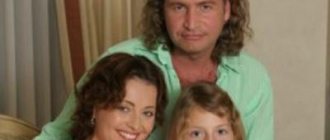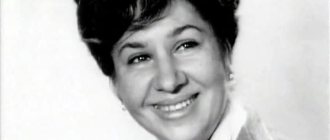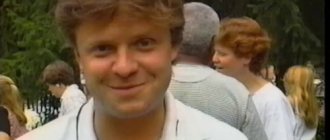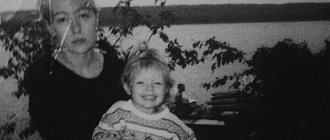Briefly about the composer
Sergei Vasilyevich Rachmaninov, biography, whose photos are presented in this article, was an outstanding composer. Pyotr Ilyich Tchaikovsky himself, when he first heard the conservatory student S. Rachmaninoff, predicted a great future for him. The composer had an unusually excellent ear and excellent musical memory. The first opera written by S. Rachmaninov, “Aleko,” was staged at the Bolshoi Theater when the author was only 20 years old. Since 1894 S.V. Rachmaninov began his teaching career. During the years of the Revolution, he emigrated from the country and lived the rest of his life abroad, where he was very homesick, but he was not destined to return.
Childhood and youth
The biography of Rachmaninov is interesting starting from his childhood. The composer was born on April 1, 1873. The place of birth has not been precisely established. But Sergei Vasilyevich spent his entire childhood on an estate called Oneg near Novgorod, which belonged to his mother. Although in some sources you can find the statement that he was born in Starorussky district, in the Semyonovo estate. Sergei Vasilyevich was not the only child in the family. In total, his parents had six children. He had two brothers - Arkady and Vladimir, and three sisters - Varvara, Sofia and Elena. S. Rachmaninov studied music from the age of 5.
Biography of Rachmaninov S.V. associated with such names as V.V. Demyansky, Nikolai Zverev and S.I. Taneev. These are three great teachers from whom Sergei Vasilievich studied. The composer began receiving higher musical education in St. Petersburg. But after 3 years of study he moved to Moscow. Then he studied at the capital's conservatory in two departments: composition and piano. Sergei Vasilievich graduated from the Conservatory with a gold medal. S. Rachmaninov began giving concerts during his student years. Pyotr Ilyich Tchaikovsky attended Sergei Vasilyevich’s exam and gave him an A with three pluses.
Important dates in Rachmaninov's biography
- 1873 - birth
- 1882 - admission to the St. Petersburg Conservatory
- 1885 - studies at the Moscow Conservatory with Zverev
- 1888 - training with Ziloti
- 1889 - training with Arensky, Taneyev
- 1892 - graduation from the Moscow Conservatory, opera “ Aleko
” - 1893 - worked as a teacher at the Mariinsky Women's School
- 1897 - work in Mamontov's opera, failure of the First Symphony
- 1897–1901 - nervous shock, treatment by a psychiatrist, break in creativity
- 1902 - marriage to Satina
- 1903 - birth of the eldest daughter Irina
- 1904 - position of conductor at the Moscow Bolshoi Theater
- 1906 - travel through Italy, life in Dresden
- 1907 - birth of the youngest daughter Tatyana
- 1909 - tour of Canada and America
- 1917 - performances in Copenhagen
- 1918 - departure to the USA for permanent residence
- 1918–1926 - creative crisis
- 1941 - the last masterpiece " Symphonic Dances
" - 1943 - death
Composer's parents
Composer Sergei Rachmaninov was born into a family of a military man and a pianist.
The biography of his mother Lyubov Butakova is not very well known. She was the daughter of a general. Born in 1853, died in 1929. She graduated from the conservatory in piano. Her teacher was Anton Rubinstein. She had a rich dowry - five estates with large plots of land. One estate was a family estate, the rest were received by her father as a reward for his service. The biography of Vasily Arkadyevich Rachmaninov, the father of the great composer, is connected with the army and music. He was born in 1841 and died at the age of 75. He was an officer, a hussar, and was musically gifted. He entered service at the age of 16 with the rank of non-commissioned officer. A year later he became a cadet, and a year later - an ensign. Then he held the ranks: second lieutenant, cornet, senior adjutant, staff captain, lieutenant. He resigned several times for family reasons and returned to the military.
He was finally dismissed from service for health reasons in 1872. After which he was appointed as a mediator of land delimitation in several districts of the Novgorod province. During the years of military service he was awarded: a cross for the conquest of the Caucasus, a Silver medal for the conquest of Chechnya and Dagestan, a medal for the pacification of the Polish rebellion and a silver medal for the conquest of the Western Caucasus.
Sergei Vasilyevich's wife
Biography of Rachmaninov S.V.
would not be entirely complete without a story about his beloved wife. Changes occurred in the composer's personal life in 1902. He spent almost all of his teenage years with his future wife Natalya Satina; they were very friendly. The composer dedicated his famous romance “Don’t sing, beauty, in front of me” to her. On April 29, 1902, the wedding of a couple in love took place in a small church on the outskirts of Moscow, after which the newlyweds immediately left for the station and went on a trip. They returned to Russia only a few months later.
Soon their eldest daughter Irina was born. Sergei and Natalya were relatives - cousins. At that time, it was forbidden for close relatives to marry; for this it was necessary to obtain permission from the emperor himself, and he gave such permission only in particularly exceptional cases. Sergei Rachmaninov submitted a petition to the Tsar, but the lovers got married without waiting for an answer from him. Everything worked out fine. A few years later their second daughter was born.
Personal life
Rachmaninov was a very amorous man, in whose heart feelings for the ladies around him repeatedly flared up. And it was precisely thanks to such emotionality that the composer’s romances turned out to be so lyrical. Sergei was about 17 years old when he met the Skalon sisters. The young man especially singled out one of them, Vera, whom he called either Verochka or “My Psychopath”.
Rachmaninov's romantic feeling turned out to be mutual, but at the same time purely platonic. The young man dedicated the song “In the Silence of the Secret Night,” a romance for cello and piano, as well as the second part of his First Piano Concerto, to Vera Scalon.
After returning to Moscow, Sergei writes the girl a huge number of love letters, of which about a hundred have survived. But at the same time, the ardent young man falls in love with Anna Lodyzhenskaya, the wife of his friend. For her, he composes the romance “Oh no, I pray you don’t go!”, which has become a classic. And Rachmaninov met his future wife, Natalya Alexandrovna Satina, much earlier, because she was the daughter of the very relatives who sheltered him when Sergei dropped out of school at the boarding house.
In 1893, Rachmaninov realized that he was in love and gave his beloved a new romance, “Don’t sing, beauty, in front of me.” The personal life of Sergei Rachmaninov changes nine years later - Natalya becomes the official wife of the young composer, and a year later - the mother of his eldest daughter Irina. Rachmaninov also had a second daughter, Tatyana, who was born in 1907. But Sergei Vasilyevich’s love of love did not exhaust itself there.
One of the “muses” of the Russian classical legend was the young singer Nina Koshits, for whom he specially wrote a number of vocal parts. But after Sergei Vasilyevich emigrated, he was accompanied on his tours only by his wife, whom Rachmaninov called “the good genius of my whole life.”
Despite the fact that the composer and pianist spent most of his time in the United States, he often visited Switzerland, where he built the luxurious Senar villa, which offers an amazing view of Lake Firvaldstät and Mount Pilatus. The name of the villa is an abbreviation of the names of its owners - Sergei and Natalia Rachmaninov. In this house, the man fully realized his long-time passion for technology. There you could find an elevator, a toy railroad, and one of the new products of that time - a vacuum cleaner. The composer was also the holder of a patent for his invention: he created a special muff with a heating pad attached to it, in which pianists could warm their hands before a concert. Also in the star’s garage there was always a brand new Cadillac or Continental, which he changed every year.
The biography of Sergei Vasilyevich Rachmaninov would be incomplete if we did not talk about his love for Russia. All his life the composer remained a patriot; in exile he surrounded himself with Russian friends, Russian servants, and Russian books. But he refused to return because he did not recognize Soviet power. However, when Nazi Germany attacked the USSR, Rachmaninov was almost on the verge of panic. He began sending money collected from many concerts to the Red Army Fund and encouraged many of his acquaintances to follow his example.
Descendants of the great composer
Sergei Rachmaninov was a loving father. The biography of his descendants is also connected with music. The composer had two wonderful daughters who loved their father very much and cherished his memory. Irina studied in the USA and was fluent in two languages – English and French. She lived in Paris for a long time. She was the wife of Prince P. Volkonsky. The marriage lasted only 1 year, the husband died, although he was only 28 years old. Second daughter of S.V. Rachmaninova, Tatyana, also studied in America. In the 30s of the 20th century she moved to Paris. Her husband was Boris Konyus, the son of a violinist, composer and teacher, who studied at the conservatory in the same course as her father, S. Rachmaninov.
Alexander Rachmaninov-Konyus is the son of the composer’s daughter Tatyana. He is the only grandson of Sergei Vasilyevich. He inherited his grandfather's letters, his archive and autographs. Alexander was involved in organizing competitions named after his great grandfather, and also held celebrations dedicated to S.V. Rachmaninov in Switzerland.
The most famous opuses
Sergei Rachmaninov wrote a huge number of works. The biography and work of this great Russian composer are significant for our country. He left a huge legacy for posterity.
Works by Sergei Rachmaninov:
- Operas: “The Miserly Knight”, “Francesca da Rimini”, “Aleko”.
- Sonata for cello and piano.
- Concertos for piano and orchestra.
- Vocalise for voice accompanied by piano (dedication to the opera soloist A. Nezhdanova).
- Symphonies.
- Rhapsody on a Theme of Paganini.
- Poems: “Island of the Dead”, “Bells” and “Prince Rostislav”.
- Suite "Symphonic Dances".
- Cantata "Spring".
- Fantasy "Cliff".
- Fantasy pieces for piano.
- Sonatas for piano.
- Capriccio on gypsy themes.
- Pieces for cello and piano.
- Works for a-capella choir: “All-Night Vigil” and “Liturgy of St. John Chrysostom.”
- Russian songs for choir and orchestra.
- Pieces for piano 4 hands.
As well as a large number of romances, preludes, Russian songs, etudes and much more.
Works
While still a student at the conservatory, Rachmaninov became famous at the Moscow level. It was then that he wrote the First Piano Concerto, the Prelude in C-sharp minor, which became his calling card for many years, as well as many lyrical romances.
But the career that had started so successfully was interrupted due to the failure of the First Symphony. After its performance at the St. Petersburg Concert Hall, the composer received a barrage of criticism and devastating reviews. For more than three years, Sergei Vasilyevich did not compose anything, was depressed and spent almost all the time lying at home on the sofa. Only by resorting to the help of a hypnotist did the young man manage to overcome his creative crisis.
In 1901, Rachmaninov finally wrote a new major work, “Second Piano Concerto.” And this opus is still considered one of the greatest works of classical music. Even modern musicians note the influence of this creation. For example, based on it, Matthew Bellamy, frontman, created such compositions as “Space Dementia”, “Megalomania” and “Ruled by Secrecy”. You can also feel the melody of the Russian composer in the songs “The Fallen Priest” by Freddie Mercury, “All by Myself” by Celine Dion and “I Think of You” by Frank Sinatra.
The symphonic poem “Island of the Dead”, “Symphony No. 2”, which, unlike the first, was a tremendous success with the public, as well as the very complex “Piano Sonata No. 2” turned out to be absolutely stunning. In it, Rachmaninov made extensive use of the effect of dissonance and developed its application to the maximum level. Speaking about the work of the Russian composer, one cannot help but mention the magically beautiful “Vocalise”.
This work was published as part of the collection of Fourteen Songs, but is usually performed alone and is an indication of the performance's mastery. Today there are versions of “Vocalise” not only for voice, but also for piano, violin and other instruments, including with orchestra.
After emigration, Sergei Vasilyevich did not write significant works for a very long time. Only in 1927 did he release Piano Concerto No. 4 and several Russian songs. In the last years of his life, Rachmaninov created only three musical works - “Symphony No. 3”, “Rhapsody on a Theme of Paganini for Piano and Orchestra” and “Symphonic Dances”. But it is noteworthy that all three belong to the pinnacle of world classical music.
Emigration
During the revolution of 1917, Sergei Vasilyevich Rachmaninov went on tour abroad. The composer never returned to Russia. The family first settled in Denmark, and a year later moved to America. Sergei Vasilyevich lived there until his death. He was very homesick and dreamed of returning. For a long time, living in exile, he did not write new works. Only 10 years later the muse visited him again, he continued his work as a composer, but performed extremely rarely as a conductor. Most of the works written by Sergei Vasilyevich abroad are imbued with longing for his native country. In America, S. Rachmaninov was a huge success. The composer died on March 28, 1943. Buried near New York.
This article gives a complete biography of Rachmaninov - from childhood to the last days of his life.
Creative path
Already as a student, he wrote his first opera “Aleko” as a graduation work, as well as a number of romances, his first piano concerto, pieces for piano, and the famous prelude in C sharp minor.
Immediately after the conservatory, Rachmaninov had to get a job, since by that time the family was in need. First, he teaches at the Moscow Mariinsky Women's School, then gets a job as a conductor at the Moscow Private Opera of Savva Mamontov.
By 1897, the name of Rachmaninov was already on everyone’s lips as the name of an excellent and talented composer and conductor. However, in March of this year, a disaster awaits him: the premiere of the First Symphony ends in complete failure due to poor quality performance (Glazunov conducted). For the young composer, this was a real blow, from which he was able to recover only with the help of an experienced psychiatrist, Nikolai Dahl. A protracted nervous illness explains the break in Rachmaninov’s work from 1897 to 1901.
In 1901, a more mature period of his creative path began. He becomes a conductor at the Bolshoi Theater in Moscow, goes on a trip to Italy, and then, in order to concentrate exclusively on composing musical compositions, Rachmaninov lives in Dresden for three years. After this period, he goes on a tour of Canada and America.
After the revolution of 1917, Rachmaninov left to perform in Copenhagen, where he was able to pay off all his debts with fees for his performances. After this, the composer left for permanent residence in New York and, until 1826, experienced a creative crisis. He writes little abroad, mostly goes on tour and gives concerts. He sympathizes and worries about the Russian people during the Great Patriotic War. Donates considerable sums to the Red Army and USSR Defense Funds.
In the last years of his life, Rachmaninov did not stop performing concerts, even despite his serious illness.
Interesting facts from the life of a genius
S. Rachmaninov was a passionate, honest person, demanding of others and himself. The biography, interesting facts from which testify to this, was examined by us in this article. But few people know that:
- as a child, Sergei Vasilyevich loved to visit monasteries with his grandmother and listen to the ringing of bells;
- the composer's grandfather was an amateur pianist, took lessons from John Field, wrote music, and several of his works were published;
- at the age of 4, Sergei Vasilyevich already knew how to play four hands in a duet with his grandfather;
- the composer's first love was Vera Skalon, she also fell in love with the young S. Rachmaninoff, he dedicated the romance “In the Silence of the Secret Night” and several other works to her, wrote touching letters to her;
- Sergei Vasilievich was very punctual;
- when the composer was angry, his face became scary;
- S. Rachmaninov had a very quiet voice;
- the composer did not like to be photographed;
- preferred Russian cuisine;
- S. Rachmaninov's favorite pastimes are horse riding, skating, swimming, cars and motor boats, agriculture.
Rachmaninov's main achievements
- He created his own original musical style based on the synthesis of the Moscow and St. Petersburg schools of composition and the traditions of Western European music. The Russian national style, created by Rachmaninov, had a significant influence on all world music of the 20th century.
- Rachmaninov enriched the fund of world music with ancient Russian Znamenny chant.
- Rachmaninov brought Russian piano music to a high world level: he became one of the first composers in Russia, whose piano works are performed by all pianists in the world.
- Rachmaninov the pianist became a role model for many generations of pianists around the world, leaving standard recordings of works on which musicians still study.











